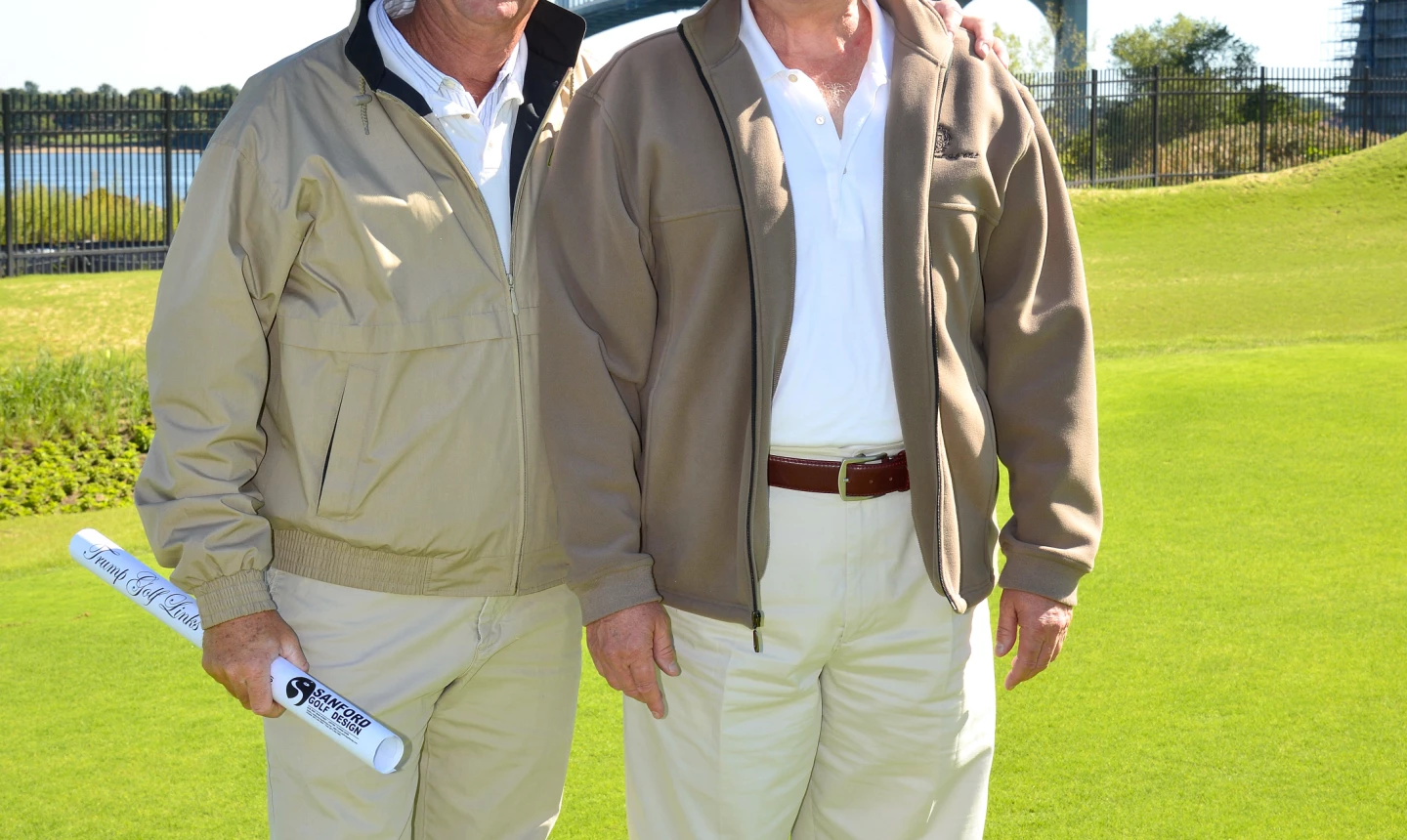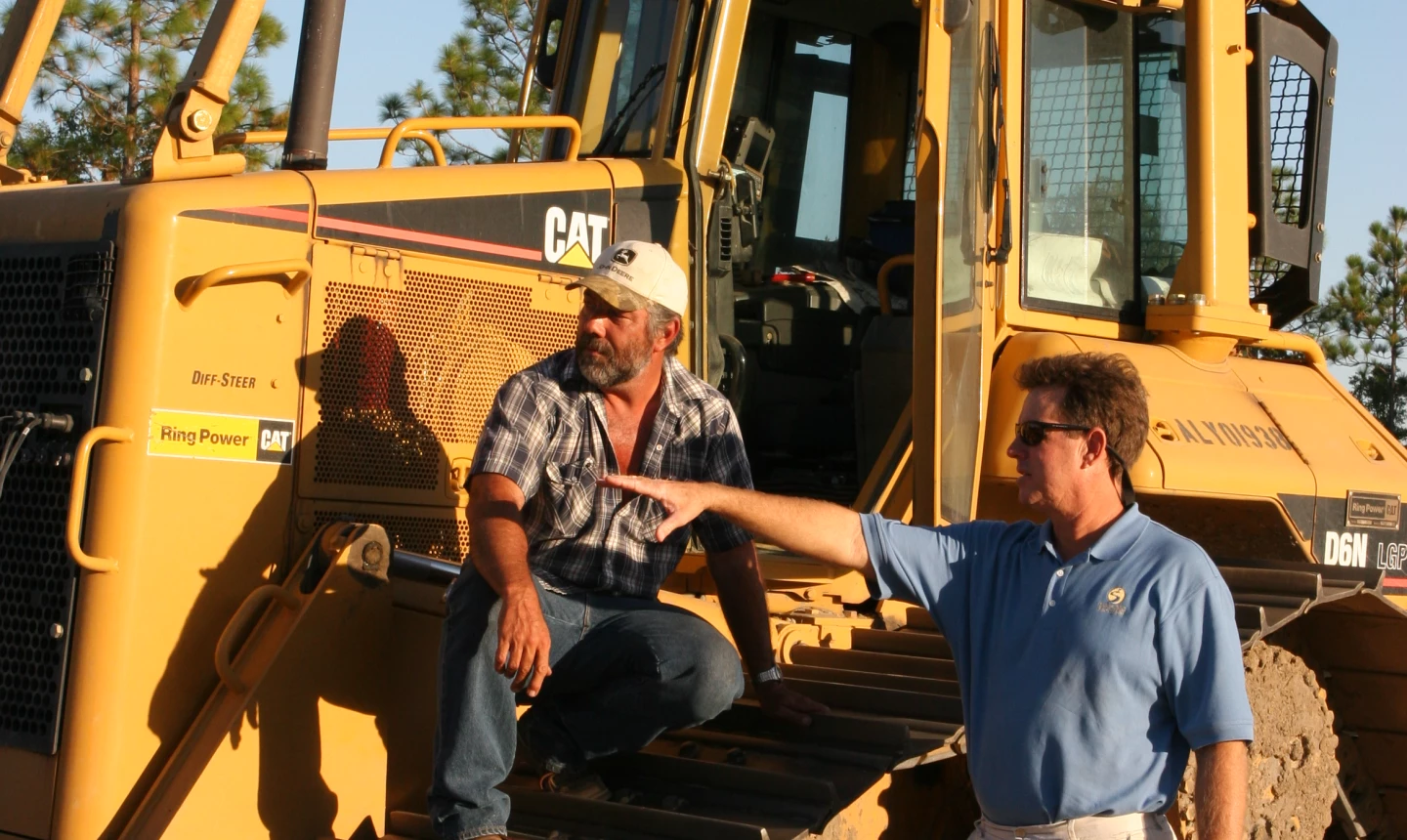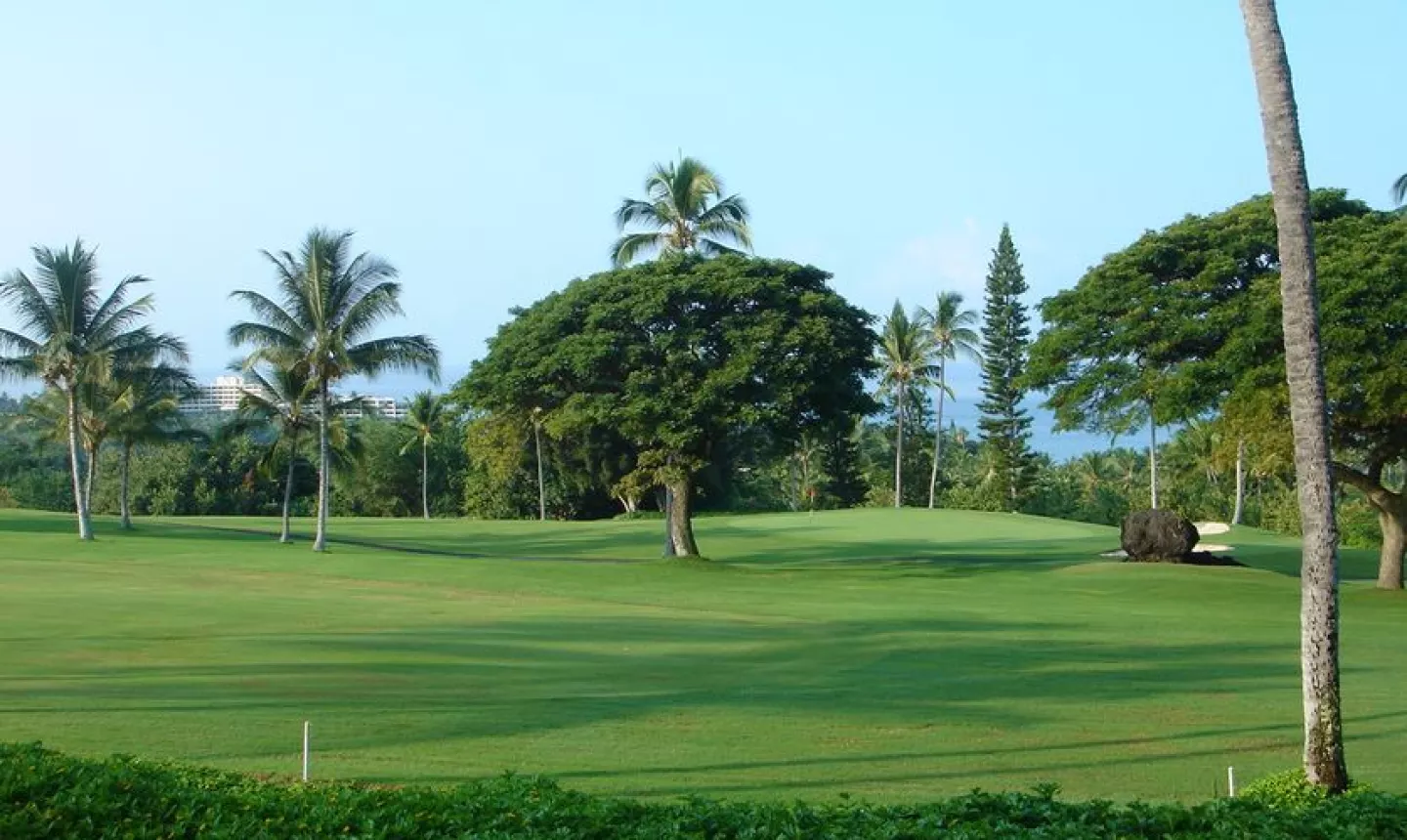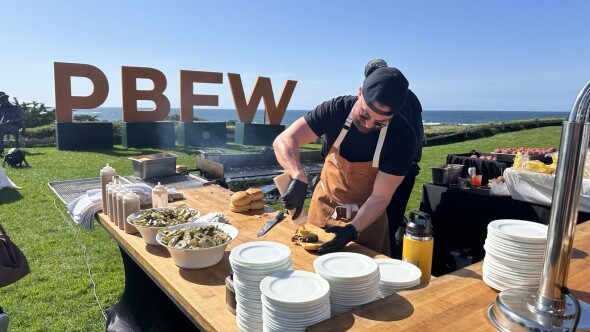This is a big year for Sanford Golf Design.
The firm, based in Jupiter, Fla., is putting the finishing touches on a new course in Egypt and an important renovation project in Hawaii. Most important, John Sanford is a key figure in what should be the biggest course opening in America in 2015, the debut of Trump Golf Links Ferry Point in New York.
Here are some excerpts from a phone interview with Sanford about a wide range of topics:
GolfAdvisor: Since I was just in Hawaii in December 2014, what's the status of the renovation work at Kona Country Club's Ocean Course?
John Sanford: We are getting it finished up. The irrigation is complete. That is what has taken a good bit of time. You have been over there. You heard some stories about trenching through lava. There is this stuff called blue lava. It is the hardest rock in the world. There were some delays because of that. We are in the grow-in and landscaping phase to finish.
GolfAdvisor: When will it open?
Sanford: It is going to be later on in the summer. I'm going to say July or August. We've got some extensive landscaping coming. One of the things we wanted to do was to make it better and sustainable and take some areas of grass out. The entire course was wall-to-wall Bermuda. We are taking out about 12 acres of turf and replacing that with native landscaping. It will have a cleaner look. Over time, there was a lot of settling. It was built on lava. There was a lot of leveling of the fairways to fill in the potholes. What will be most noticeable will be new bunkering and new landscaping.
GolfAdvisor: What other projects are you working on these days?
Sanford: We are fortunate to have a few projects going. We are working on some renovation projects in Florida and the Northeast. We are pursuing more of the same, and we are still fortunate to be working in the Middle East.
We have an interesting new course in construction on the north coast of Egypt. We've got a background in resort courses in Egypt. We started this course before the revolution. It was this time of the year, in 2011, four years ago. It was about 50 to 60 percent built when the revolution kicked in. Everything stopped. I won't get into the politics, but it took three years. Things are beginning to become stable. It's the Hacienda Bay Golf Resort, a good-sized resort right on the beach west of Alexandria right on the Mediterranean Sea. It is very cool. What is interesting, it is the location where the Allied forces stopped the "Desert Fox" during World War II. The Mediterranean in this location is breathtaking. We will have nine holes done this season. The other nine holes open next year.
Even though the original design was done, we are redesigning the course and re-purposing it. The owners felt like they needed to be more sustainable. Originally it was a championship venue at 7,300 yards. They wanted to reduce the turf area and water consumption. We reduced the course and they added some hotel and villa areas to the master plan. Seven or eight holes are completely being rebuilt. It will be a 6,600-yard par 70. I actually was all for it, to make it more sustainable, to help them garnish some additional revenue through real estate sales and hotel rooms. The world has more than enough 7,000-yard courses. The 6,600-yard course is a great solution, especially over there. It will be plenty of course for the guest.
GolfAdvisor: Do you feel business is growing these days?
Sanford: We always feel like we could be busier. Even when had six to seven projects going, we could use more work. There has been a bit of a resurgence in renovation work. Everybody is pretty much aware of that. The last few years, we are seeing these private clubs -- there is a concentration here in south Florida -- they deferred improvements. It was a national recession, but it was a golf depression. Golf was hit harder than other real estate projects and money got tight with everything happening with the recession. All the mortgage problems hurt golf a lot. It hurt our new courses. You don't see development companies with courses incorporated. I see that as persisting for a while. The good news is the existing clubs who lost members from 2008 through 2012, now these clubs are starting to realize, we have to do these projects. Whatever the features are on the course, they all wear out. We have to improve these things to stay attractive for new members.
GolfAdvisor: Let's switch gears and talk about Ferry Point. What's going to be the reception when it opens?
Sanford: I think it will be well received by the public. It was a dual mission for us and the Nicklaus Design team. The city requested from the beginning that it be a public course, but a tournament venue. At the same time, it has to be playable and enjoyable for public golfers. We all talk about doing that. We always want it to be challenging for the best players but enjoyable. That's a tough thing to do. Courses are either overly challenging and suitable for single digits or not that much of a challenge. We were able to combine both of those concepts.
GolfAdvisor: What about the Ferry Point project was a challenge?
Sanford: We were involved from the beginning. We were the first ones in. Obviously having Mr. Nicklaus on the team, his insight and talents helped, but a big reason why we were chosen, we had experience building on a landfill in Boston at Granite Links. Even though this was a different type of landfill, we were aware of a lot of the issues and the additional infrastructure needed to close a landfill and build a course on top of it. I'm not sure how technical you want me to get, but there is a whole other set of infrastructure needed on the landfill to have it sustainable for a period of time.
GolfAdvisor: I don't want to get too technical but were there surprises?
Sanford: There were plenty of surprises, and it wasn't smooth. It was a marathon of high hurdles. Any time you are working with government, dealing with the New York City Parks and Recreation Department, that's challenging, but then we are working with a landfill and throw in a union site contractor that had no golf course experience, it was a very challenging project. For us, it was five years start to finish from the initial design and permitting. It's not as quick as the same type of work for a private developer. We were ready for it and embraced it and got it done to the best of our ability.
GolfAdvisor: How much does it bother you that your name gets lost when people give all the credit to Jack Nicklaus and Donald Trump?
Sanford: I have tremendous respect for both Mr. Nicklaus and Mr. Trump. I've known Jack's family since I was a kid. They are great people. I've come to know Mr. Trump through this project. They are a fantastic organization that has done great things for the golf industry. They came in to grow the turf. They have done an exemplary job. The Trump brand brings attention. The project itself garners attention. I understand that those are two of the biggest names in the game. There is one other guy (Tiger Woods) who isn't playing well these days. They garner much of the attention.
Myself and my firm were honored to be involved and to have seen it through. In the end, people in the industry, they know (what we did). We managed the project, and we are collaborating with Jack on the design. Our big role was to make sure that Jack's concepts and strategies got implemented into the landfill. That was the magic of the project. It didn't always allow what he wanted to happen. We had to work around site constraints. Jack couldn't be better as far as special constraints. He was great with different ideas and being flexible. He was great in getting high quality and strategy.
GolfAdvisor: And last question, I'm curious what course developers are looking for when you're pitching new projects. Is the message different? Shorter courses? More sustainable?
Sanford: For us, to be honest, it's not that different for Sanford Golf Design. Even 10 years ago, we were pitching sustainability. We break that down to economic and environmental and social. It has to be good for a community. Being a landscape architect first, sustainability has always been on top. We opened a course in 2007 (called) Juliette Falls that was built during the heyday. Even while things were flying high and people were spending too much on developing courses, we still built a course in Ocala (Florida) that worked with the land. It wasn't expensive to build. It has been ranked among the top 10 courses in Florida (also rated #6 in Florida on GolfAdvisor in 2014). There's only 70 acres of turf because of the way we approached project. It survived because of what we designed and the way it is maintained. It is doing well and real estate has picked up. A lot of projects in early to mid 2000s didn't make it because of overspending. Our pitch isn't that much different than five to 10 years ago. We are looking for that next new course. There just isn't that many out there.















